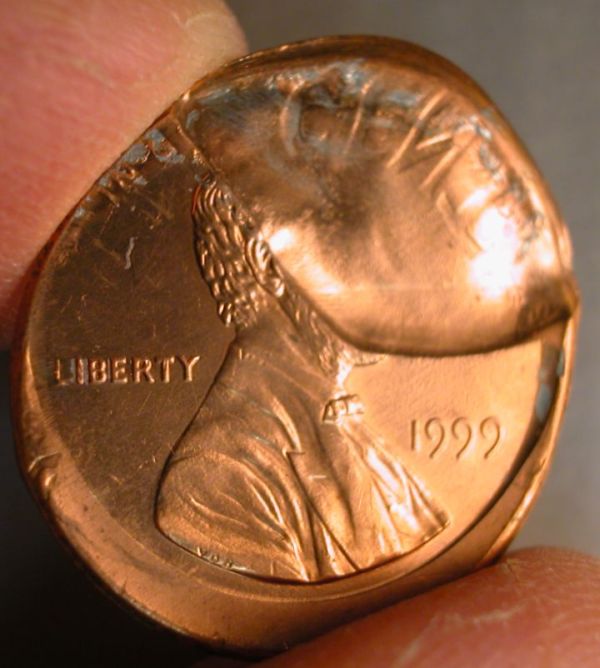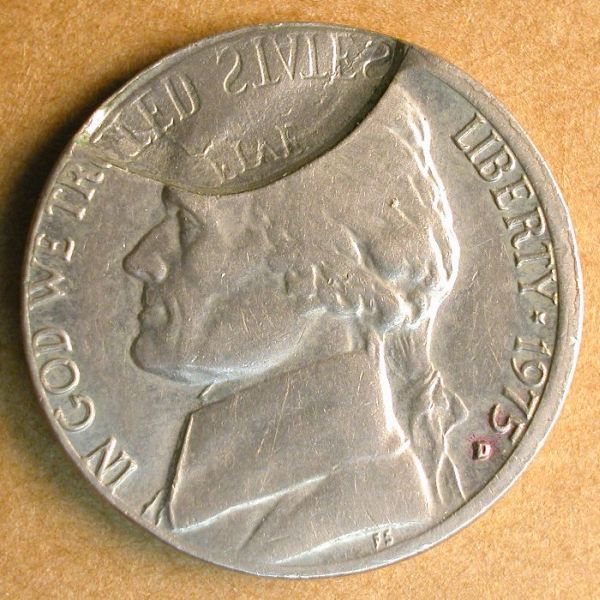PART VI. Striking Errors:
Brockage:
Partial Brockage:
Aligned partial brockages:
Definition: A partial brockage in which the incuse, mirror-image design elements line up with the corresponding die-struck design elements on the opposite face. Aligned partial brockages arise in three ways:
1. Brockage from an off-center (partial) die cap. This is the most common cause. A planchet is fed into the striking chamber in an off-center position. It is struck by the dies on both faces and then sticks to one of the dies (usually the upper or hammer die). Another planchet is fed into the striking chamber and the partial die cap is struck into it. The result is an incuse, mirror-image version of the design that is aligned with the die-struck design on the opposite face. These types of aligned partial brockages generally lack an impression of the design rim. When struck in-collar, metal often flows over the top of the collar to form a horizontal lip
2. Brockage from an elliptical clip coin. An oval planchet (an elliptical clip) enters the striking chamber and settles against the collar. It is struck by the dies on both faces and then sticks to one of the dies (again, usually the hammer die). Another planchet is fed into the striking chamber and the elliptical coin is struck into it. Once again you end up with an incuse mirror-image version of the design that is aligned with the die-struck design on the opposite face. This type of aligned partial brockage will usually show an impression of the design rim and will lack horizontal lipping.
3. Brockage from an elliptical strike clip. A planchet is fed into the striking chamber in an off-center position. During the strike it is sheared in two between the hammer die and a collar that is frozen in the “up” position. The oval remnant of the coin within the striking chamber then sticks to one of the dies (usually the hammer die) and is struck into the next planchet. This type of aligned partial brockage may show an abnormally broad “rim” impression, which actually represents an impression of the rounded shoulder that often forms on the face struck by the anvil die. Horizontal lipping is generally absent.

This broadstruck 1999 cent shows an aligned partial brockage of the reverse design on the obverse face. It was almost certainly generated by a partial die cap.

This 1975-D nickel shows an aligned partial brockage of the reverse design on the obverse face. It was struck fully within the collar. The presence of a design rim impression and the absence of horizontal lipping indicates that this brockage was probably generated by a small elliptical clip nickel.